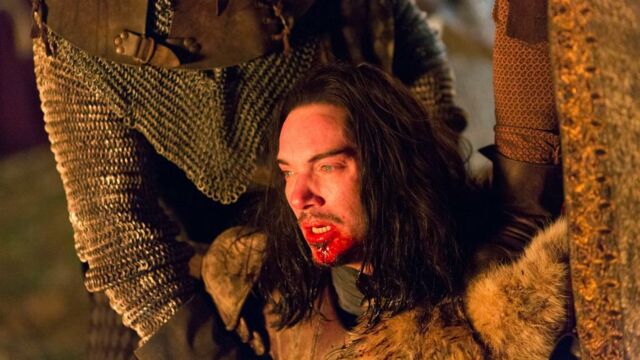Dracula, creature of literature and cinema
A novel published in 1897, Dracula is the work of the Irish-born British writer Bram Stocker. An aristocratic, bloodthirsty vampire holed up in his Transylvanian castle, but also a creature doomed to painful immortality, Count Dracula immediately captured the hearts of both fascinated and frightened readers. The figure of Dracula, as popularised by Bram Stocker's novel, quickly became a legend and an inexhaustible source of inspiration for writers and film-makers.
Discover our latest podcast
In 1922, Friedrich Wilhelm Murnau made the first unofficial adaptation of the book under the title Nosferatu the Vampire. Then in 1931 it was Tod Browning's turn to direct his own version of the myth with Bela Lugosi in the title role. These two films have become classics and have given rise to countless other adaptations, notably by Francis Ford Coppola in 1992.
So who was the real Dracula ?
Count Dracula as described by Bram Stocker did not exist as such, but his character is largely inspired by a very real figure...and far more frightening. It is about a warrior-king named Vlad Tepes, or Vlad the Impaler (my, don't you wonder how he got that nickname!), who lived in Romania in the 15th century and was prince of Wallachia. His father was called Vlad II and was nicknamed the Dracul, or 'dragon'. Vlad III would therefore be known as Drăculea, 'the son of the dragon.'
At the time of Vlad III the Impaler, Wallachia, which today corresponds to southern Romania, was the last bulwark of the Christians against the Ottoman invasion. Prince Vlad III had difficult relations with the empire and periods of war and peace followed one another. To consolidate his power, Vlad set out to create a new elite by giving key positions to men of the people over whom he ruled.

Absolute ruthlessness
His aim was to eliminate the boyars, the Wallachian aristocrats who had killed his father. He showed unlimited cruelty towards them, and mass murders only went on increasing. But his cruelty also hit the poorest subjects in his lands, and Vlad III commmitted an odious ploy on many occasions.
Summoning the unfortunates to a banquet, he ended up burning them alive. But his greatest feat, to which he owes the nickname of the Impaler, took place in 1460 when he impaled and then burned between 25,000 and 30,000 people. Heads cut off, children and old people murdered, opponents impaled, the exactions committed by Vlad III and his soldiers are frightening. And why? To frighten potential invaders by warning them.

Where is Dracula's castle?
Dracula's Castle - or Bran Castle - is located near Brasov in Transylvania and is a listed monument. Although this splendid castle, built in the 13th century, attracts crowds of curious visitors every year, there is in fact no historical document attesting to the presence of Vlad III.
The village does not care too much, though, as they profit from selling numerous merchandise items bearing the image of the world's most famous vampire. In order to attract local tourists and to encourage the inhabitants to be vaccinated against the coronavirus, Bran Castle has even opened a vaccination centre in its grounds during all weekends in May 2021.















